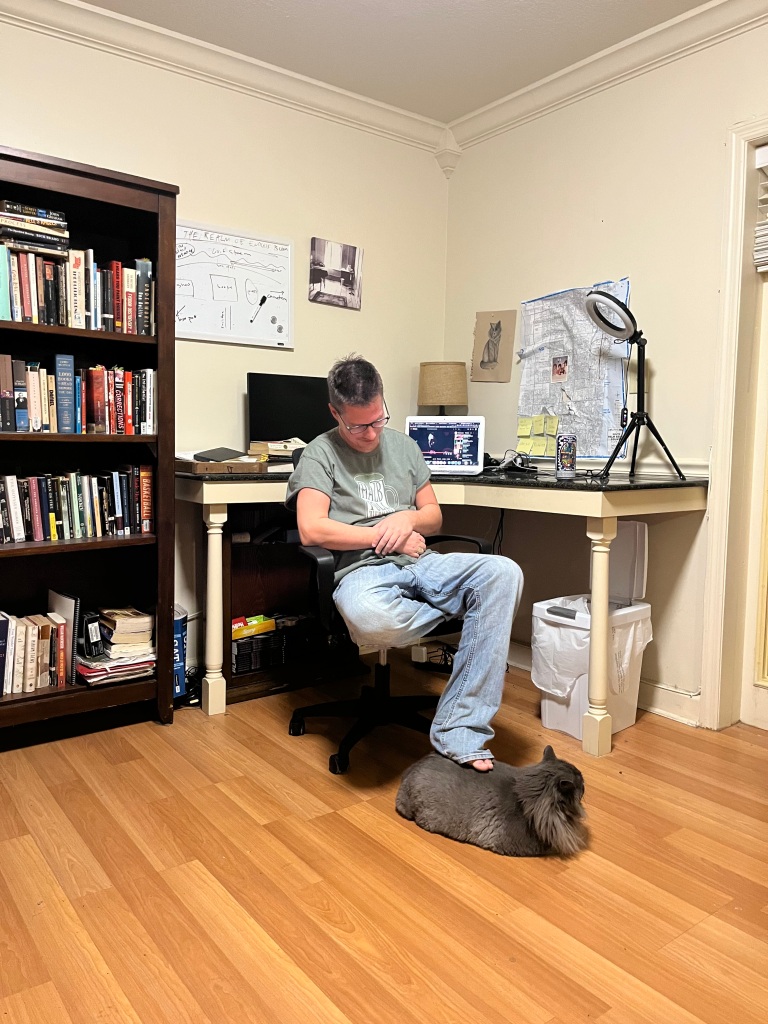Research
Current Research Interests
History of the memoir:
My most recent project, derived from my dissertation research, combines digital media studies and the medical humanities. While researching the chapter on The Corrections I noticed a correlation between 1) the rise of SSRI’s and related psychotropics following the FDA’s approval of Prozac in 1987 and; 2) an exponential increase of memoirs of mental illness and/or trauma published in the 90s and this century. Perhaps starting with William Styron’s Darkness Visible (1989) and Elizabeth Wurtzel’s Prozac Nation (1993), memoirs from a host of talented writers, including Lauren Slater, Kay Redfield Jameson, Marya Hornbacher, Augusten Burroughs, and Mary Karr, among others, appeared, changing the landscape of American publishing and introducing myriad cultural trends (for example, reality TV). My objective is to focus on a genealogy of “self-writings,” from the “hypomnemata” Foucault discusses in Roman life, to the commonplace books of the Early Modern period and later American slave narratives. My aim is to contextualize the ascension of the modern memoir as a genre unto itself and study how its aesthetics, rhetoric, and paratext both resist and follow in the tradition of these earlier works.
New Media Illness Narratives/Digital Memoirs:
In addition to studying how modern memoirs relate to previous incarnations, I will at the same time make a counter-move to examine the emergence of digital media illness narratives, or what I call “Digital Memoir| Memoir 2.0,” analyzing their formal and thematic continuities and discontinuities with the memoirs of the 90s and early century. Overall thesis or argumentative through-line for this project, which admittedly is provisional, revolves around a cluster of utopic ideas that the more publicized illness narratives and memoirs become, the more empathetic and understanding the American public becomes, resulting in better treatment and research for the disease and behavioral “dys”orders that, according to the DSM, are becoming more and more prevalent in society. Over the past twenty years, digital media and web technologies have not only dramatically influenced society in general, but also the field of higher education and scholarship. I’ll utilizes these new forms for a variety of pedagogical purposes: to inspire new ways of writing, thinking, and communicating. His research, furthermore, considers how these emerging digital media carve open spaces for a new way to tell stories, structure archives and databases, and increase the potential for sharing and collaboration.
Dissertation
“A Psychiatrist is the God of our Age”: Contemporary American Fiction and the Postmodern Critique of Psychiatry
Abstract:
It is a commonplace by now among postmodern theorists, for example Frederic Jameson, Gilles Deleuze, Francois Lyotard, and Michel Foucault, that the peculiar conditions and characteristics of postmodernity are productive of alternative subjectivities. This recognition has engendered groundbreaking scholarship in such disciplines as medicine, cartography, history, linguistics, and political theory by those listed above and others. This dissertation aims to broaden the scope of postmodern scholarship into a new realm—that of biopsychiatry—by using works of contemporary American fiction as case studies in which to analyze the development, codification, and gradual critique of this edifice.
M.A. Thesis
Abstract:
This Thesis written to complete Villanova University’s M.A. requirement explores how David Foster Wallace’s fiction pushed beyond postmodernism to establish something more sincere and earnest, in order to reclaim a vital relationship between author and reader, as well as the the reader and her community. I employ such theorists as Derrida, Levinas, and Derek Attridge to describe Wallace’s innovation, often called post-postmodernism as one that prioritizes intersubjectivity between readers and writers, making relation and communication, instead of cultural critique or metafictional play, the primary aesthetic force. I also explore how Wallace attempts to circumvent the postmodern commodification of art by composing works that function, as best they can within a marketplace, as “gifts,” drawing on gift theorists such as Mauss, Hyde, Bataille, and Derrida (again). In both ways, I conclude that the “new way of writing” that Wallace proposed and accomplished rests on a firm conviction that literature should operate as an ongoing conversation and dialogue between writer and reader, reader and community, reader and self.


